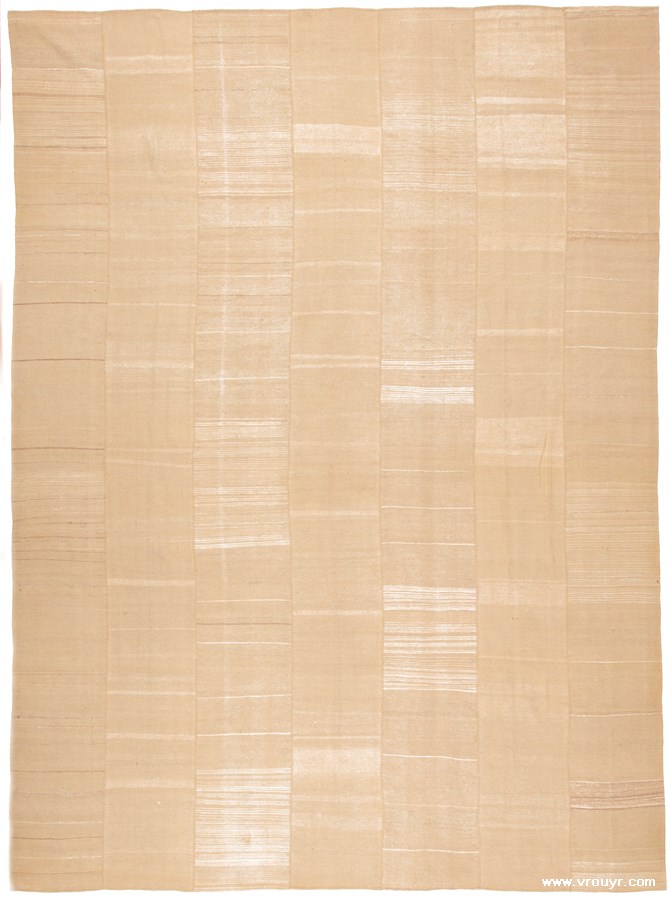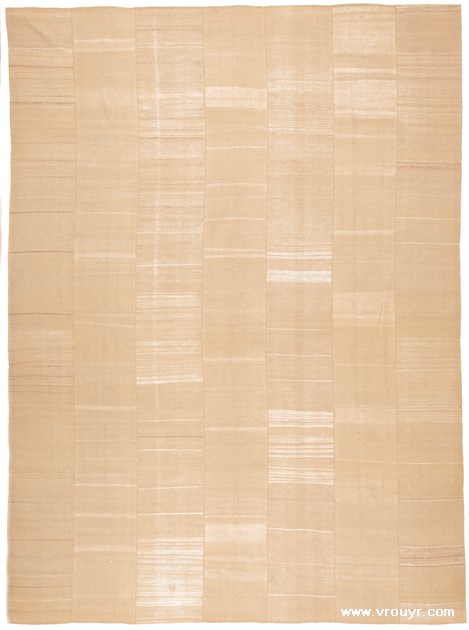Mazandaran Kilim
ref: 34367
5000 - 10000 EUR
333 x 450 cm
10' 11¹/₈" x 14' 9¹/₈"
warp and weft: wool
Iran
Coulours may appear different on the website than in reality. All mentioned prices and sizes are indicative and not binding. Possibly some rugs that are still online, are not available anymore in the showroom.
The first reference to the weaving of kilims in Mazandaran can be found in a book written in the year 982, proving that already a thousand years ago, kilims were being woven in the city Amol.
Today’s production consists of :
Do-la: (double layer) A kilim, folded and attached length-wise. Mostly made in plain white colours or with a design of black and white stretched rectangles.
The do-la is used for protection of the knotted carpets on the floor, or as a blanket.
Do-ru: A double faced kilim that serves as a separation or a front-hanging.
The do-ru from the Hezar-jerib often display a different design on each side. This proves the great skill and technical knowledge of the artisans.
Age and condition :
Most Hezar-jerib weavings we find today are in excellent condition.
Mazandaran’s inhabitants provide little information about the age of the weavings that were handed down to them by their parents or grandparents.
The finer pieces were certainly not meant for everyday use. They were often the highlights in a young girl’s dowry.
There are very few elements for an exact dating, so we must rely on our general knowledge of textiles.

 Visit Vrouyr2
Visit Vrouyr2



 favourites
favourites






